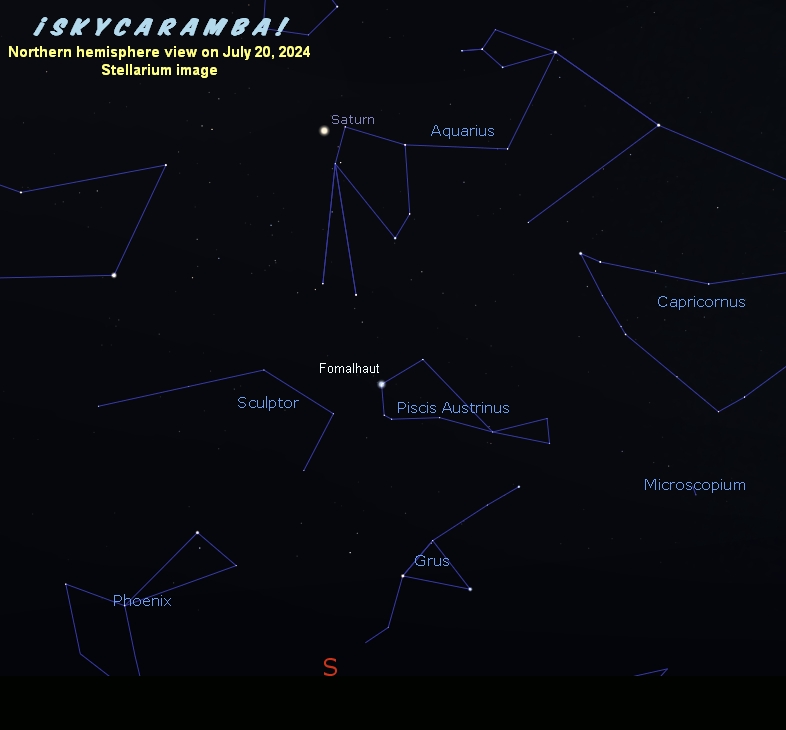
Most of the planet watching this month is from midnight to dawn. Saturn rises in the late evening and appears stationary next to Aquarius. It’s actually retrograde, but since it just began that motion at the end of June, it takes a few weeks into July to notice with casual naked eye observations. Even then, maybe the ringed planet’s position will look unchanged. If you have a telescope, look at Saturn to see its rings just beginning to tilt more toward us. They were at their minimum angle in late June.
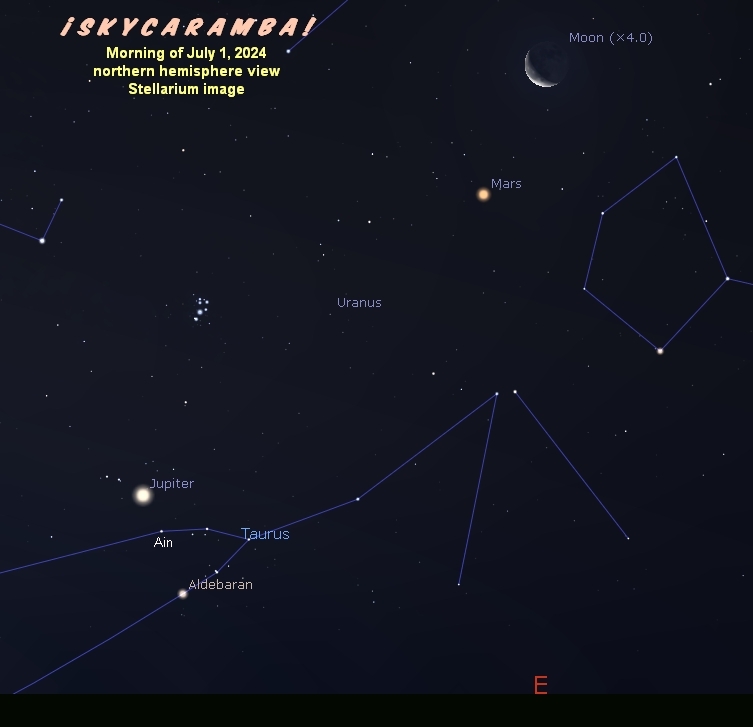
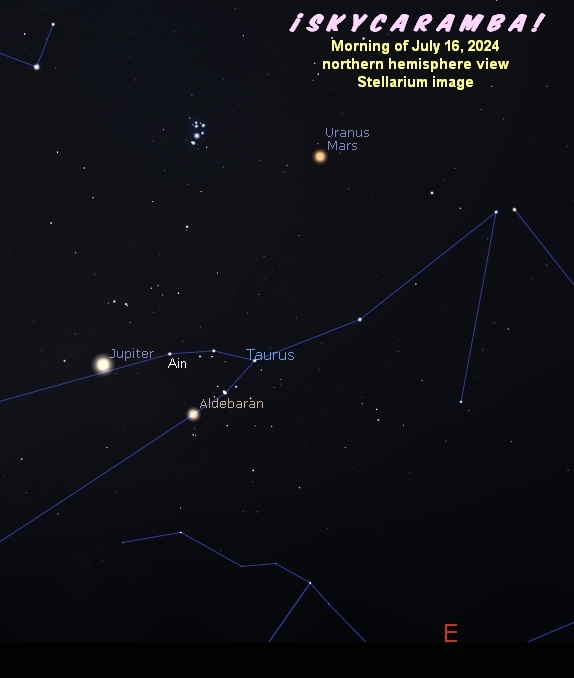
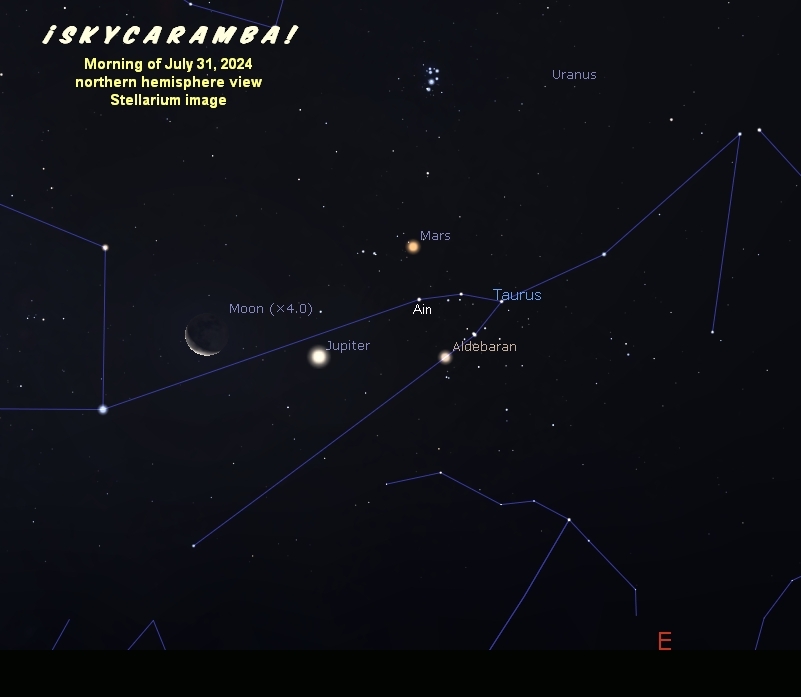
In the wee hours, Mars, Uranus, and Jupiter rise. Mars starts July next to the head of Cetus the sea monster. It moves into Taurus, passing Uranus on the way on the 15th. Jupiter starts July near Ain on the Hyades V. Ain is opposite Aldebaran on the other side of the V. Mars, almost catching up to Jupiter, ends July where Jupiter was at the month’s start.
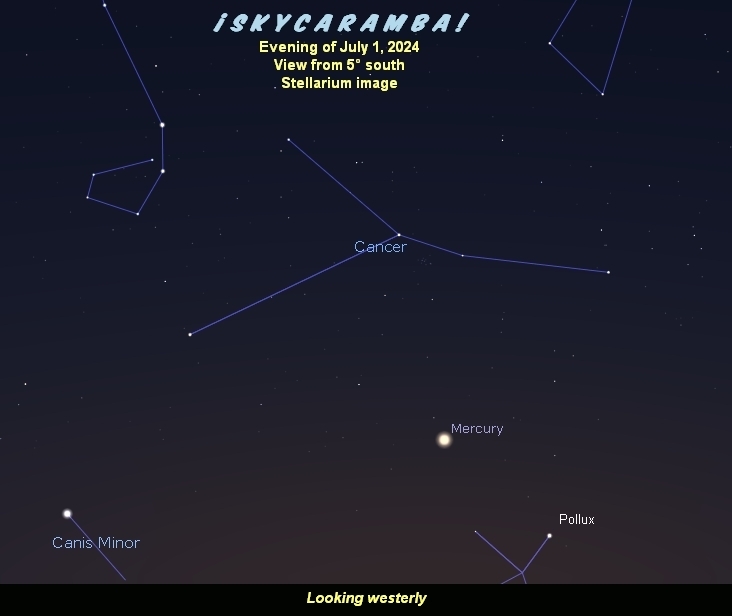
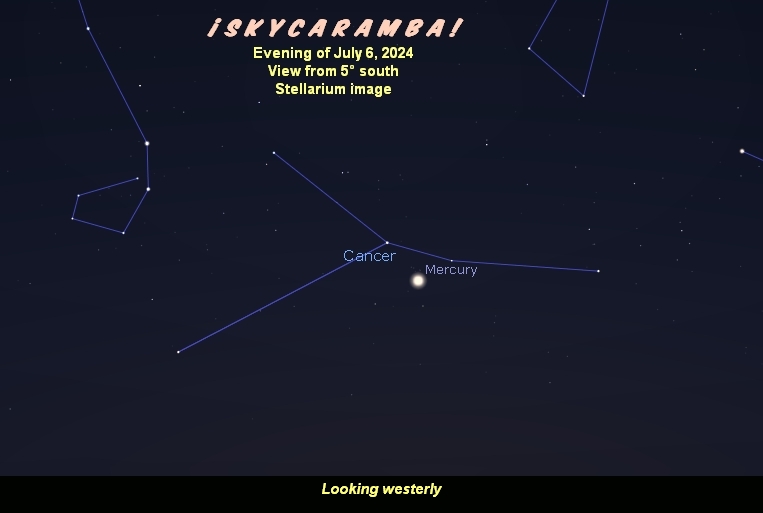
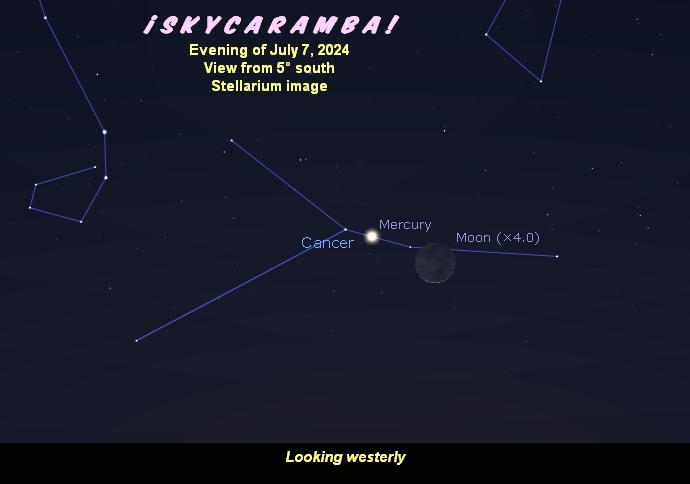
Mercury is an evening object, starting July in Gemini and heading into Cancer by the 6th. Viewers in the southern hemisphere and partway into the northern hemisphere can try to see the messenger planet move through the Beehive Cluster on the 6th, 7th, and 8th. Use binoculars for a stunning view. Depending on your location, you could need them to readily spot Mercury in the sunset glow. The moon will pass by too. Mercury heads toward Leo while Venus moves into Cancer behind it. While the goddess is in Gemini, observers who like a challenge can try to spot Pollux and the moon close by on the 6th. Venus goes through the Beehive Cluster on the 17th, 18th, and 19th. As Cancer is getting lower in the sky at dusk, this is another challenging view. The best views of Mercury are likely to be around the 22nd when it’s at greatest elongation. It will be 26.9 degrees east of the sun.You can see Mercury and Venus somewhat close near Regulus in Leo in the last days of July.
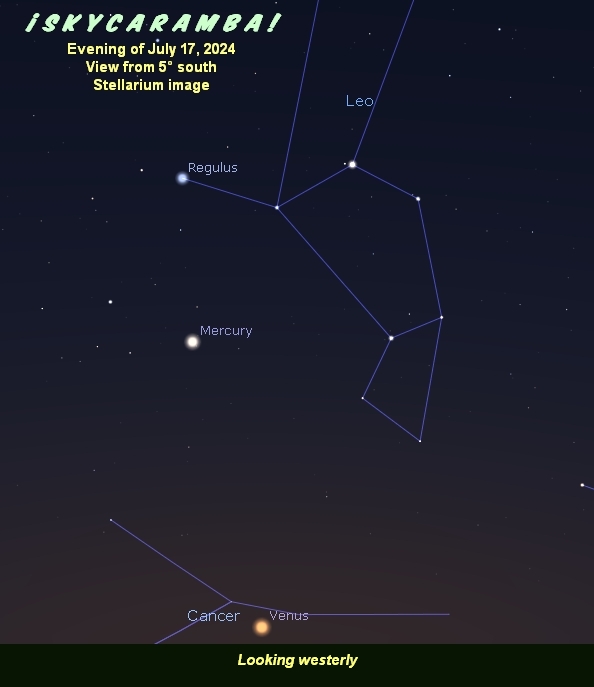
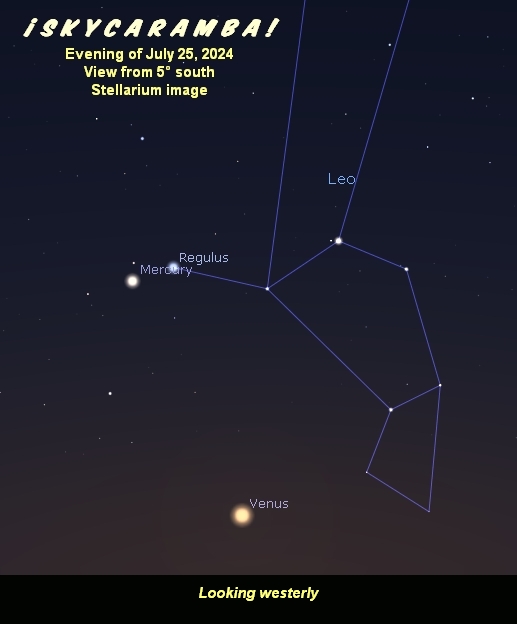
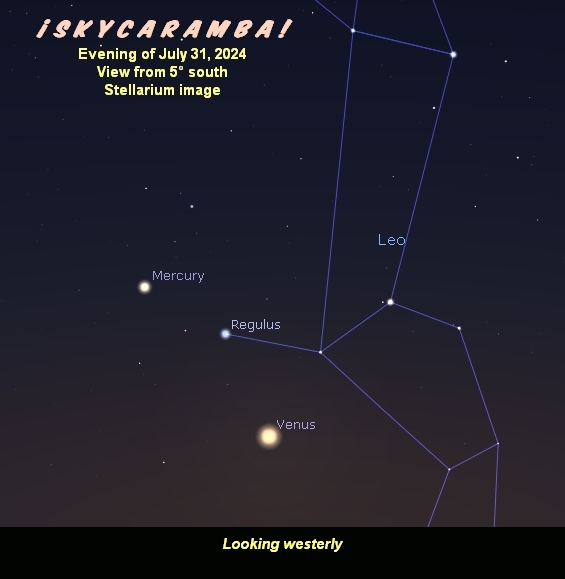
The moon’s phases this month: new on the 5th, first quarter on the 13th, full on the 21st, and last quarter on the 28th.
Declination notes for the moon in July: northern lunistice on the 5th at 28.4 degrees, southbound over the equator on the 12th, southern lunistice on the 19th at 28.4 degrees, and northbound over the equator on the 25th.
The moon is at apogee on the 12th at a distance of 404,400 kilometers. Perigee is on the 24th at 364,900 kilometers.
Two planets go through aphelion this month. Earth itself is 1.017 astronomical units from the sun on the 5th. Mercury is 0.467 astronomical units from the sun on the 27th. Venus is the only planet with a perihelion this month. It’s 0.718 astronomical units from the sun on the 10th.
Two minor planets are at opposition this month. Ceres, on the 5th, will be 1.887 astronomical units from us. It may be seen in binoculars. Pluto will be 34 astronomical units from us during its opposition on the 23rd. It may be seen in a big telescope in a very dark sky.
Notable conjunctions this month:
Moon and Mars, 3.8 degrees, 1st
Moon and Uranus, 3.8 degrees, 2nd
Moon and Jupiter, 4.9 degrees, 3rd
Moon and Aldebaran, 9.7 degrees, 3rd
Venus and Pollux, 5.6 degrees, 6th
Moon and Pollux, 1.8 degrees, 6th
Moon and Venus, 3.8 degrees, 6th
Moon and Mercury, 3.1 degrees, 7th
Moon and Regulus, 2.8 degrees, 9th
Jupiter and Aldebaran, 4.8 degrees, 9th
Moon and Spica, 0.8 degrees, 14th
Mars and Uranus, 0.5 degrees, 15th
Moon and Antares, 0.2 degrees, 17th
Moon and Saturn, 0.3 degrees, 24th
Mercury and Regulus, 2.1 degrees, 25th
Moon and Neptune, 0.5 degrees, 25th
Moon and Uranus, 4.0 degrees, 29th
Moon and Mars, 4.9 degrees, 30th
Moon and Aldebaran, 9.9 degrees, 30th
Moon and Jupiter, 5.3 degrees, 30th
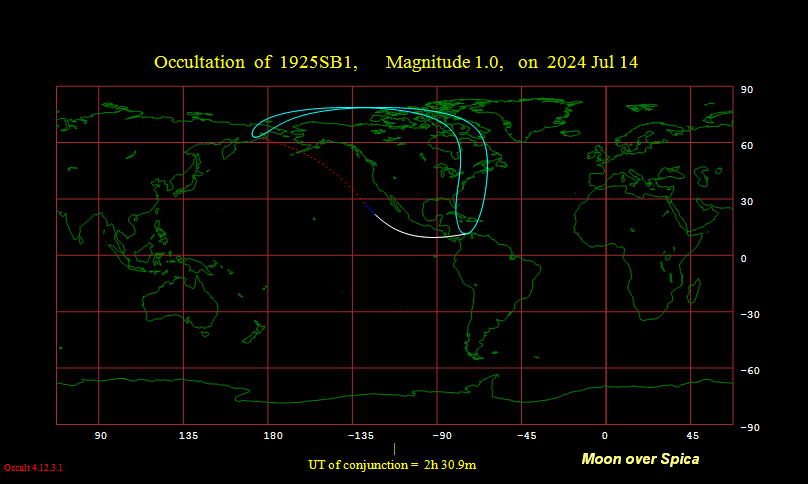
The Moon-Spica conjunction on the 14th comes with an occultation visible on the evening of the 13th local time from North America.
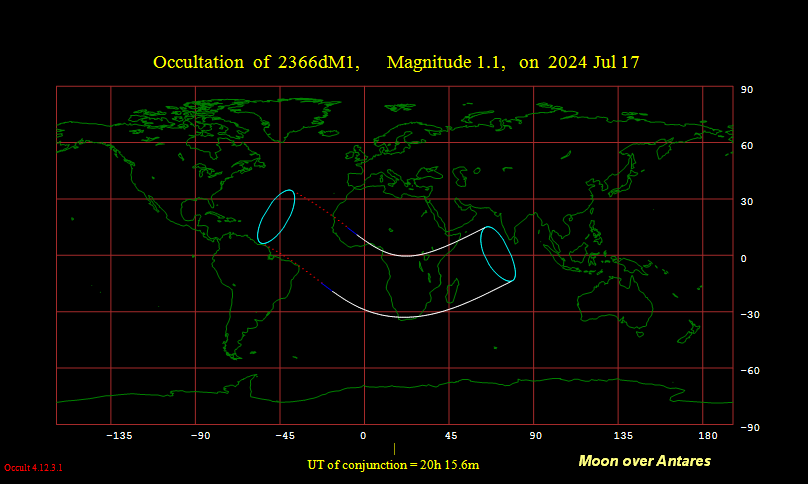
The southern half of Africa gets an occultation of Antares on the evening of the 17th. Sky watchers in Madagascar and on boats in the Atlantic and Indian oceans near Africa can see it too.
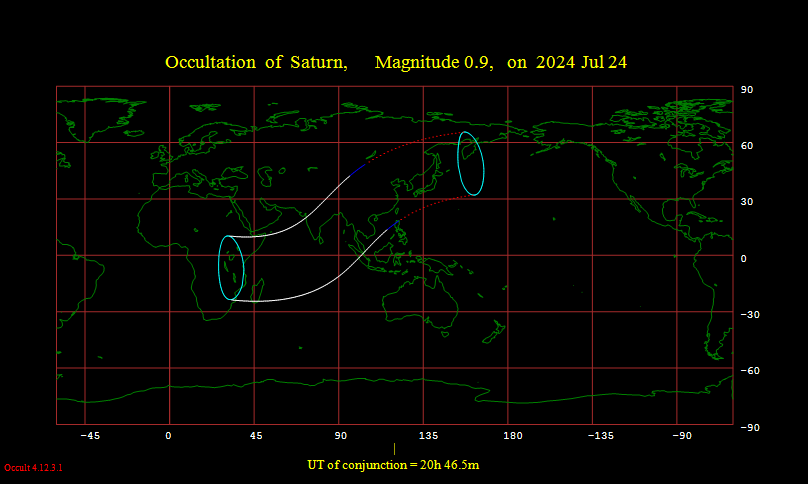
Madagascar, the Indian Ocean, and south central and southeast Asia get an occultation of Saturn with the conjunction on the 24th. For many viewers, the local time will be the morning of the 25th.
And the moon passes in front of Neptune for the conjunction on the 25th. The view is from New Guinea, Micronesia, and the Pacific Ocean nearby. The local time for the event will be the 26th from many locations.


